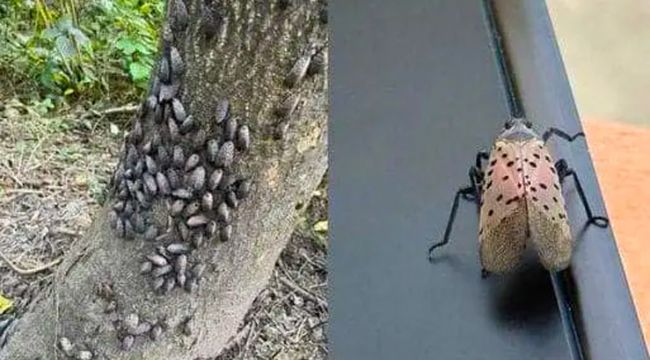Understanding the Lanternfly Threat
Insects often evoke mixed feelings—some people are fascinated by them, while others prefer to avoid them entirely. Yet, some species, such as the lanternfly, or Lycorma delicatula, demand immediate attention due to the extensive damage they can cause. Originally from China, this pest has spread across the U.S., leaving a trail of devastation in gardens and farmlands alike. If you spot one in your garden, swift action is key.
What Makes Lanternflies So Destructive?
Lanternflies are sap-feeding insects, and their method of feeding severely weakens the plants they target. By using their needle-like mouthparts to pierce the plant’s surface, they drain it of essential nutrients. This constant feeding stresses the plant, making it vulnerable to disease and stunted growth. Even worse, the lanternfly excretes a sticky substance called honeydew, which promotes the growth of sooty mold. The mold covers the plant's leaves and stems, blocking sunlight and hindering photosynthesis, which can eventually lead to the plant's demise.
In my own garden, a maple tree that once thrived was attacked by lanternflies. The tree’s once vibrant leaves became dull, and the sooty mold began to cover its branches, choking its ability to grow. This is just one example of the havoc lanternflies can wreak in both small gardens and large agricultural operations.
How to Identify a Lanternfly
To effectively control the spread of lanternflies, it's important to recognize them. Adult lanternflies are about an inch long, with grayish wings covered in black spots. Their underwings feature a striking red and black pattern, most noticeable when they fly. The nymphs, or juvenile stages, are initially black with white spots and turn red as they grow.
Lanternflies in the U.S.: A Growing Problem
The first sighting of lanternflies in the United States occurred in Pennsylvania in 2014. It's believed that the insects arrived as stowaways on goods shipped from Asia, hiding among stone or other materials. Since then, they’ve spread rapidly along the East Coast and into other regions, thriving in environments that support their primary host plants.
What to Do If You See a Lanternfly
If you come across a lanternfly, it is critical to eliminate it on sight. While this may seem extreme, these insects multiply quickly, and their feeding can devastate gardens and crops. You can either squash the adult lanternflies or, if they are in the nymph stage, apply sticky traps to tree trunks to capture them as they climb.
Dealing with Lanternfly Eggs
Egg masses left by lanternflies are another major concern. They resemble gray mud smeared on smooth surfaces like tree bark, outdoor furniture, or even vehicles. To prevent the eggs from hatching, scrape them into a plastic bag filled with alcohol or hand sanitizer to kill them. Eliminating the eggs is one of the most effective ways to reduce lanternfly populations before they can cause damage.
Preventive Strategies for Protecting Your Garden
While killing individual lanternflies and destroying eggs are essential steps, taking preventive measures can help ensure they don’t take over your garden.
Regular Inspections: Frequently check your plants for signs of lanternfly activity, particularly vulnerable species such as grapevines, maple, and fruit trees.
Sticky Bands: Install sticky bands around tree trunks to trap nymphs as they try to climb. These bands can be found at most garden centers or can be made at home.
Natural Predators: Consider encouraging natural predators like certain birds and spiders that feed on lanternflies.
Insecticides: In severe infestations, chemical treatments may be necessary, but use these sparingly to avoid harming beneficial insects or the surrounding environment.
Raising Awareness and Community Efforts
Lanternflies represent more than just a personal garden problem—they pose a larger threat to local ecosystems and agriculture. Raising awareness about this pest within your community is key to combating its spread. By informing your neighbors and sharing tips on prevention and identification, you can work together to curb the lanternfly population.
Join the Fight Against Lanternflies
Dealing with lanternflies requires a concerted effort from both individuals and communities. These insects may be small, but the damage they inflict is far-reaching. If you spot one, act quickly and decisively. Share information and strategies with your neighbors to ensure that your entire community is aware and prepared to handle this invasive species. Together, we can protect our gardens, trees, and crops from the destructive force of the lanternfly.




























COMMENTS